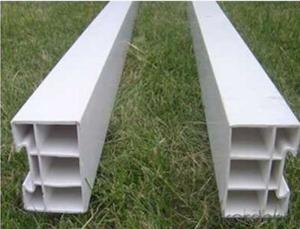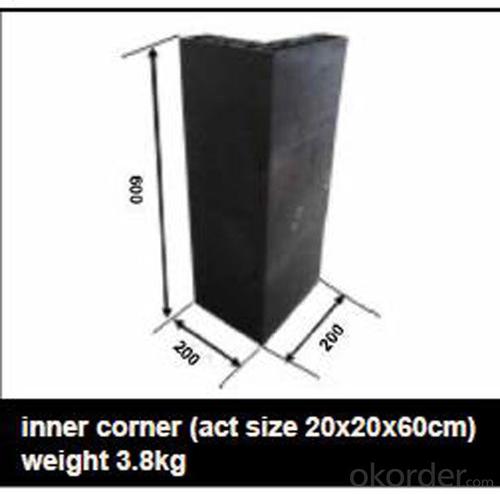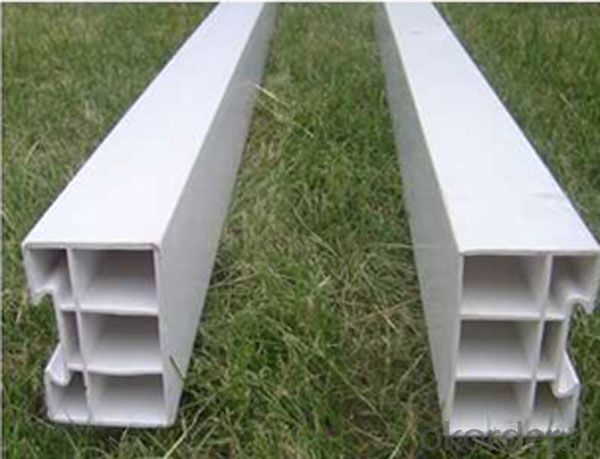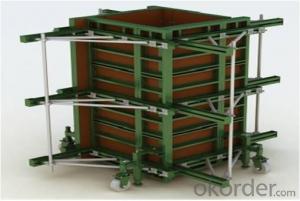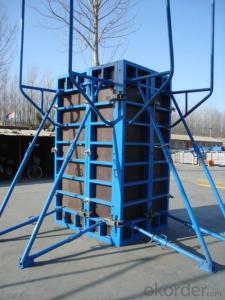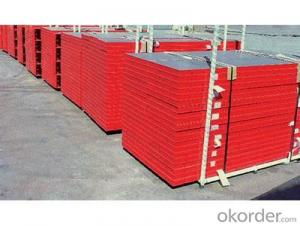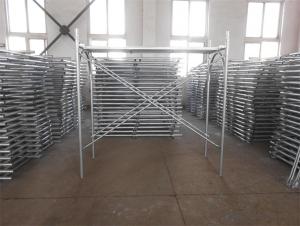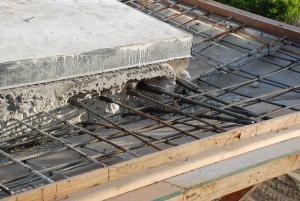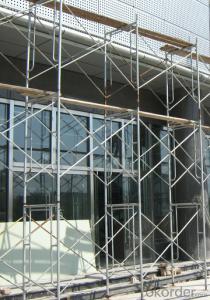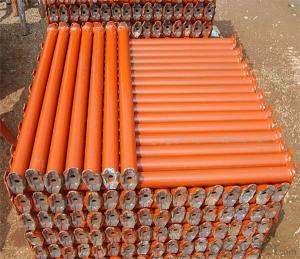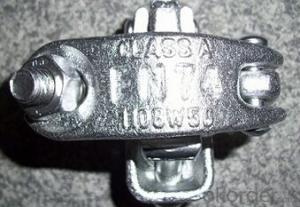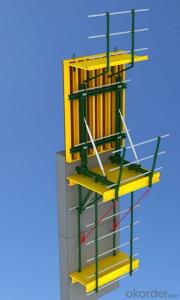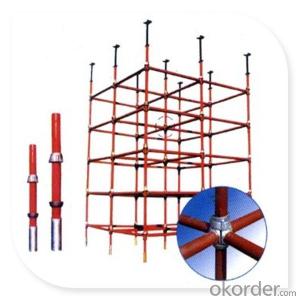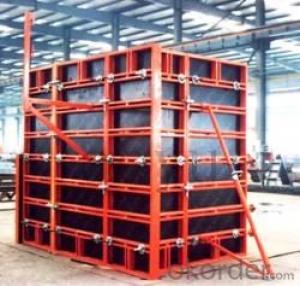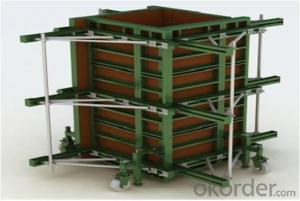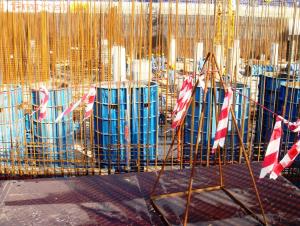Coupler Scaffolding Clamp Formwork Stage Lighting Scaffolding Cnbm
- Loading Port:
- Tianjin
- Payment Terms:
- TT OR LC
- Min Order Qty:
- 10000 set
- Supply Capability:
- 50000 set/month
OKorder Service Pledge
OKorder Financial Service
You Might Also Like
Coupler Scaffolding Clamp Formwork Stage Lighting Scaffolding CNBM
Plastic Formwork Concrete Formwork Circular Column Used Scaffolding Props New Design
Developing with new technology materials, steel formworks is no longer a must in construction concrete process. More and more buildings are established with plastic formworks. And workers love this new formworks much more.
The advantages of plastic formworks:
1.First of all--light
Yes it is the first advantage of plastic formwork. It wins the great praise of both contractors and workers.
The biggest panel is 120×1500px,weights 10.5kg only. It can be lift and set up by one person easily, which means there is no need for cranes on site.Saves a lot of cost and time.
2.Easy set up
Different size of panels can firmly locked by simply turn the special handles to 90 degree. The Panels has rib on the back, which makes the system need not traditional wood blocks and nails. The panels have holes to fit tie rod, guarantee the strength of the whole system.
3.Modularity
Modular formworks composed by different size of panels,the main item is 120×1500px panel,which is used for the large area of walls and slabs. There are also small size of panels like 10×1500px,20×1500pxcm,25×1500px,inner corner 20×20×1500px and outer corner 10×5×1500px.Due to the variety of panel size, the system can form almost all size walls 120×1500px panel of multiply by 125px. The material of modular formwork is PC-ABS mixed with special glass fibers which enable panels to hold high pressures.
4.Strength
The handles are made by high strength Nilon, each panel locked by at least 4 handles, which makes the whole system strong enough to pour 1000px walls.
5.Environment friendly
The system needs no cut and nail due to the variety size. Also it needs nearly no wood. The material can be recycled after broken, so it will not pollute the environment.
6.Consequent
Concrete does not stick to plastic formwork, thus the panels need no oil before using, and can be cleaned simply by water. The surface of the wall which build by modular formwork is smooth and without rework.
Coupler Scaffolding Clamp Formwork Stage Lighting Scaffolding CNBM
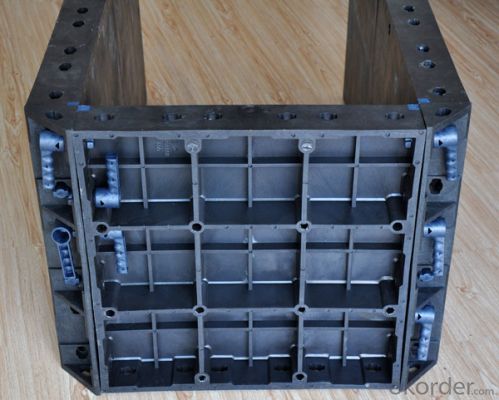
Coupler Scaffolding Clamp Formwork Stage Lighting Scaffolding CNBM
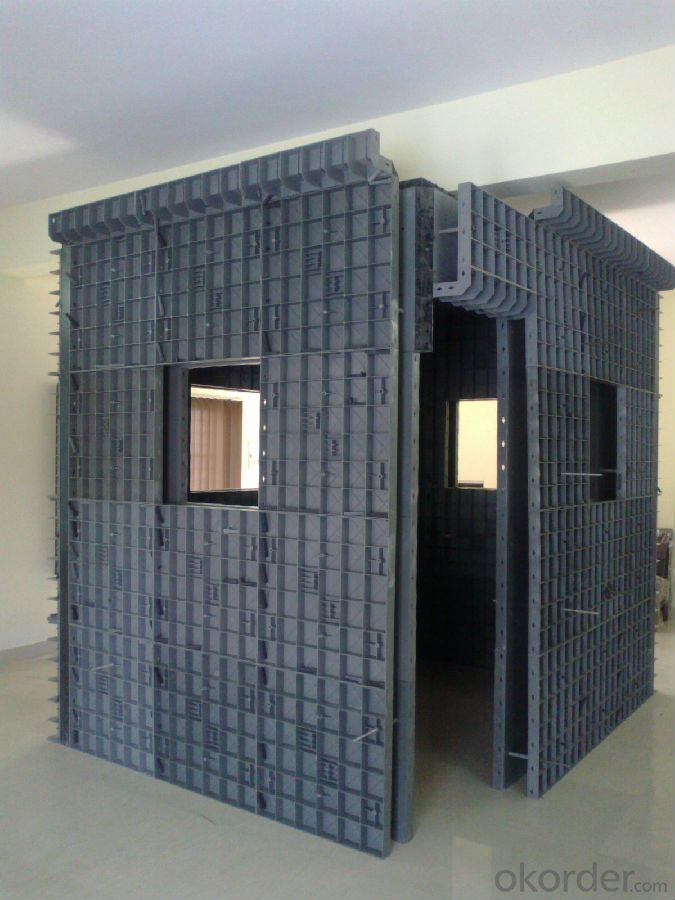
Coupler Scaffolding Clamp Formwork Stage Lighting Scaffolding CNBM
Advantage
* Good loading capacity
* Easy to assemble and dismantle
* Stable and durable thanks to its structual design & automatic welding quality
* Customized solution helps you work safe, save cost and convenient
* Excellent quality for formwork & scaffolding with wide choices
Coupler Scaffolding Clamp Formwork Stage Lighting Scaffolding CNBM
Packing
in bulk or in bundle, or as requested
Shipping
15-20 Days.
Normally small orders, it needs just 15-20 business days to the port. For goods with stock, it would be even shoter.
Other scaffolding & formwork products:
(1) Scaffolding System:
Including Ringlock Scaffolding System and accessories; Cuplock Scaffolding System and accessories; Kwikstage Scaffolding System and accessories; Haki Scaffolding System and accessories;
(2) Scaffolding Frame & Accessories:
Including Walk Through Frame Scaffolding; Ladder Frame Scaffolding; Accessories; we also can make scaffolding according to your samples or drawings.
(3) Scaffolding Couplers/Clamps:
We can produce all kinds of forged and pressed couplers, including British type couplers, American type couplers, German type couplers, Italian type couplers ,fence couplers, BRC coplers and so on. We also can produce according to your drawings or samples.
(4) Formwork System Scaffolding & Accessories:
Light Duty Shoring prop and Heavy Duty Shoring Prop; Wing nuts and Tie rods; RASTO clamp and so on.
FAQ Coupler Scaffolding Clamp Formwork Stage Lighting Scaffolding CNBM
Why Us?
We are one of the Top 500 in the world, largest construction materials supplier in China. Also we are a state-owned company and respond to every customer with large and also small orders.
We own professional manufacturers with powerful producing capacity.
Extensive and comprehensive quality control system
Excellent products with competitive prices.
Efficient services in pre and after sale.
Full energy with affluent experience team.
- Q: Can steel frame formwork be used for post-tensioned concrete structures?
- Yes, steel frame formwork can be used for post-tensioned concrete structures. Steel frame formwork offers strength, durability, and stability, making it suitable for handling the high loads and pressures associated with post-tensioned concrete. It provides a rigid framework that can support the tensioning process and ensure the proper alignment and positioning of tendons. Additionally, steel formwork allows for easy reusability, reducing construction costs and increasing efficiency for post-tensioned concrete structures.
- Q: How does steel frame formwork handle the placement of external cladding and façade materials within the concrete structure?
- Steel frame formwork offers a versatile and efficient system for constructing concrete structures, including the installation of external cladding and façade materials. This system has numerous advantages that simplify and manage the process effectively. To begin with, the steel frame formwork establishes a sturdy and stable framework for placing external cladding and façade materials. These steel frames are specifically designed to withstand the pressure exerted by the concrete during pouring, guaranteeing the structural integrity of the final product. With this stability, cladding and façade materials can be securely attached, ensuring proper alignment and fixation. Moreover, the steel frames can be easily adjusted and customized to accommodate various types and sizes of cladding and façade materials. This flexibility allows for precise material placement, ensuring a seamless and aesthetically pleasing finish. Additionally, the steel frames can be effortlessly dismantled and reassembled, providing convenient access to the structure for future maintenance or repairs. Another benefit of steel frame formwork is its ability to deliver a smooth and even surface for cladding and façade materials. The formwork system is designed to minimize imperfections or irregularities on the concrete surface, resulting in a consistent and level base for material installation. This quality finish enhances the overall appearance of the structure. Furthermore, steel frame formwork enables the integration of various construction techniques and materials, such as precast panels or curtain walls. This versatility allows for the incorporation of different architectural design elements and aesthetics into the concrete structure. The steel frames can be easily adapted to meet the specific requirements of cladding and façade materials, facilitating seamless integration with the overall design concept. In conclusion, steel frame formwork presents a reliable and efficient solution for handling the placement of external cladding and façade materials in concrete structures. Its strength, stability, flexibility, and ability to provide a smooth surface make it an ideal choice for ensuring proper installation and integration of these materials, resulting in a high-quality and visually appealing finished product.
- Q: How does steel frame formwork handle different types of concrete curing temperatures?
- Steel frame formwork is highly versatile and capable of handling different types of concrete curing temperatures. The steel frame provides excellent strength and stability, allowing it to withstand both high and low curing temperatures without warping or distorting. Additionally, the steel material has good thermal conductivity, which helps in efficiently distributing heat during curing. This ensures that the concrete cures evenly and achieves optimal strength and durability regardless of the curing temperature.
- Q: Can steel frame formwork be used for both plain and reinforced concrete structures?
- Indeed, it is possible to utilize steel frame formwork for both plain and reinforced concrete structures. This formwork system, characterized by its versatility and durability, proves suitable for a wide range of concrete structures. It grants a robust and stable framework capable of withstanding the pressure exerted by both plain and reinforced concrete during the pouring and curing stages. Moreover, the steel frame formwork can be easily adjusted and tailored to accommodate structures of varying shapes and sizes, making it an ideal choice for diverse construction projects. Furthermore, this formwork system ensures good dimensional accuracy, guaranteeing that the concrete structure is constructed in accordance with the required specifications. All in all, steel frame formwork represents a dependable and efficient solution for the construction of both plain and reinforced concrete structures.
- Q: What are the main components of a steel frame formwork system?
- The main components of a steel frame formwork system include steel panels, connecting brackets, adjustable props, form ties, and accessories such as stop-end brackets and joint pins.
- Q: How does steel frame formwork contribute to the overall waterproofing of a concrete structure?
- Steel frame formwork does not directly contribute to the overall waterproofing of a concrete structure. Its main purpose is to provide temporary support and shape to the concrete during construction. However, if the steel frame formwork is designed and installed properly, it can help ensure a precise and tight fit, which can indirectly contribute to the overall waterproofing by minimizing the potential for water leakage and improving the overall quality of the concrete structure.
- Q: What are the different types of formwork pins used in steel frame formwork systems?
- There are several different types of formwork pins that are commonly used in steel frame formwork systems. These pins are essential for securing the formwork panels and ensuring the stability of the entire structure. Some of the different types of formwork pins used in steel frame formwork systems include: 1. Wedge pins: These are the most commonly used formwork pins and are designed to secure the formwork panels together. They have a wedge shape that allows them to be easily inserted and removed. Wedge pins are typically made of steel and are available in various sizes to accommodate different thicknesses of formwork panels. 2. Flathead pins: These pins have a flat head and are used to hold the formwork panels in place. They are inserted through holes in the formwork panels and secured with a nut or washer on the opposite side. Flathead pins provide a secure connection and are often used in combination with other types of pins for added stability. 3. Connecting pins: These pins are used to connect two or more formwork panels together. They typically have a threaded end that allows them to be screwed into the panels. Connecting pins are commonly used in situations where a tight and secure connection is required, such as when forming corners or curved walls. 4. Tapered pins: These pins have a tapered shape, with one end being larger than the other. They are used to align and secure formwork panels by inserting the larger end into pre-drilled holes in the panels. Tapered pins provide a tight fit and are often used in conjunction with other types of pins for added stability. 5. Snap pins: These pins have a snap-on design that allows them to be easily attached and detached from the formwork panels. They are typically made of plastic or metal and are used in situations where frequent assembly and disassembly of the formwork is required. Overall, the different types of formwork pins used in steel frame formwork systems serve the purpose of securing the formwork panels and ensuring the stability of the entire structure. The specific type of pin used will depend on factors such as the formwork system being used, the thickness of the panels, and the desired level of stability and security.
- Q: When the steel frame tube structure adopts a rectangular plane, its aspect ratio should not be greater than the number of
- Bearing structure of reinforced concrete crane beam and normally open large power equipment
- Q: How does steel frame formwork affect the overall durability of a concrete structure in harsh environments?
- Steel frame formwork can significantly enhance the overall durability of a concrete structure in harsh environments. The use of steel as a formwork material provides several advantages that help mitigate the adverse effects of harsh conditions. Firstly, steel is known for its exceptional strength and durability. It can withstand heavy loads and extreme weather conditions, making it highly resistant to damage. This strength allows the steel frame formwork to support the weight of the wet concrete during the pouring and curing process, ensuring proper alignment and preventing any deformation or collapse of the structure. Secondly, steel is resistant to corrosion, which is a common concern in harsh environments such as coastal areas or places with high humidity. The steel frame formwork acts as a protective barrier, shielding the concrete from exposure to moisture, saltwater, chemicals, or other corrosive elements. This prevents the deterioration of the concrete over time, ensuring its long-term durability. Furthermore, steel frame formwork provides excellent dimensional stability. It minimizes the risk of warping, cracking, or other deformations that can occur due to temperature variations, moisture content, or shrinkage of the concrete. This stability contributes to the structural integrity of the concrete, ensuring that it maintains its strength and functionality over time. Additionally, steel formwork allows for precise and accurate construction. The steel frames are designed to provide a stable and rigid structure, ensuring that the concrete is poured and compacted evenly throughout the formwork. This results in a more uniform and durable concrete structure, with fewer imperfections or weak points. Overall, the use of steel frame formwork greatly enhances the overall durability of a concrete structure in harsh environments. Its strength, corrosion resistance, dimensional stability, and precise construction capabilities contribute to the long-term structural integrity and functionality of the concrete, making it a reliable choice for projects in challenging conditions.
- Q: Can steel frame formwork be used for both vertical and horizontal concrete elements?
- Indeed, it is possible to utilize steel frame formwork for both vertical and horizontal concrete elements. This versatile and enduring system can be effortlessly assembled and modified to accommodate a diverse range of concrete structures of different shapes and sizes. The steel frames offer ample strength and stability to withstand the weight and pressure exerted by the wet concrete during pouring and curing. Consequently, it is a fitting choice for the construction of walls, columns, beams, slabs, and other concrete elements, whether they are positioned vertically or horizontally. The employment of the steel frame formwork system facilitates prompt and efficient construction, ensuring exceptional quality outcomes while simultaneously reducing construction time and expenses.
Send your message to us
Coupler Scaffolding Clamp Formwork Stage Lighting Scaffolding Cnbm
- Loading Port:
- Tianjin
- Payment Terms:
- TT OR LC
- Min Order Qty:
- 10000 set
- Supply Capability:
- 50000 set/month
OKorder Service Pledge
OKorder Financial Service
Similar products
Hot products
Hot Searches
Related keywords

